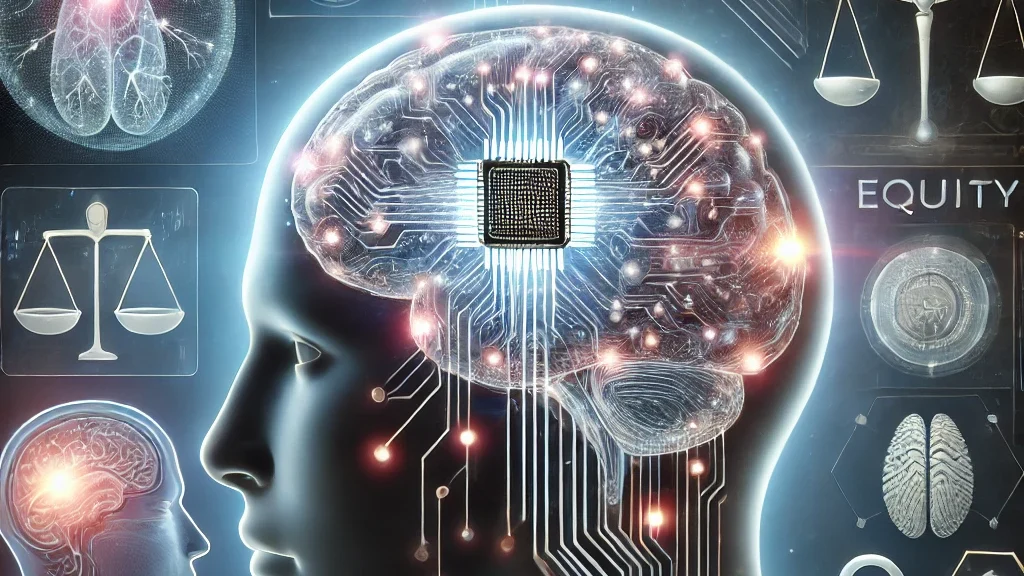
Understanding the Potential and Risks
Introduction
Imagine controlling devices with your thoughts or enhancing your memory with a microchip. Neural implants, such as those developed by companies like Neuralink, are transforming this vision into reality. These devices are advancing fields like medicine, communication, and human augmentation, but they also raise critical ethical and societal questions.
What Are Neural Implants?
Neural implants are advanced electronic devices that interact with the brain’s neural circuits. Unlike earlier devices used solely for medical purposes, today’s neural implants are paving the way for broader applications, including cognitive enhancement and human-machine integration.
Key Players and Innovations:
- Neuralink: Founded by Elon Musk, Neuralink aims to create brain-computer interfaces (BCIs) that enable humans to interact seamlessly with AI and digital devices. Their initial goal includes helping people with paralysis control computers.
- Synchron: The company focuses on minimally invasive BCIs, such as the Stentrode, which allows motor-impaired patients to operate digital devices using thought alone.
- Blackrock Neurotech: Specializes in implants for restoring motor function and treating neurological conditions like epilepsy.
Applications of Neural Implants
- Medical Breakthroughs
Neural implants are already revolutionizing healthcare by addressing severe medical conditions:
- Restoring Movement: Neuralink’s early experiments demonstrated how a monkey could control a computer cursor using its mind. In the future, this technology could restore mobility for paralyzed patients.
- Epilepsy and Parkinson’s Disease: Deep brain stimulation (DBS) devices from Medtronic are used to manage tremors and seizures effectively.
- Vision Restoration: Projects like Second Sight’s Orion system aim to restore vision in blind patients through visual prosthetics linked to the brain.
- Cognitive and Learning Enhancements
While still in experimental stages, neural implants show promise in enhancing cognitive abilities:
- Memory Augmentation: DARPA’s RAM Replay project explores neural devices to improve memory recall in veterans with brain injuries.
- Learning Acceleration: Researchers envision implants that allow individuals to acquire skills, such as learning a new language, in record time.
- Human-Computer Integration
The future of neural implants includes seamless interaction between humans and technology:
- Hands-Free Device Control: Synchron’s Stentrode enables users to compose emails or browse the web using brain signals.
- Immersive Virtual Reality: Neural interfaces could revolutionize gaming by allowing direct neural feedback, creating fully immersive experiences.
- Digital Telepathy: Companies like Kernel are researching ways for people to communicate thoughts directly via neural links.
Ethical and Societal Challenges
- Data Privacy and Security
- How will data collected by neural implants be stored and protected?
- Could this technology lead to unauthorized access to thoughts or manipulation?
- Accessibility and Social Equity
- Neural implants may be costly initially—will only the wealthy benefit?
- Could these devices widen societal gaps, creating “neuro-enhanced” elites?
- Human Identity and Autonomy
- If technology can alter thoughts or behaviors, where does the self end and the machine begin?
- Could the use of implants blur the lines between natural and artificial intelligence?
- Health Risks
- Long-term implantation might carry risks like infection, device failure, or unforeseen neural changes.
The Future of Neural Implants
Neural implant technology is evolving rapidly, fueled by advancements in AI, nanotechnology, and biocompatible materials. Key trends include:
- Wireless Implants: Future devices may require no invasive surgery, enabling broader adoption.
- Full-Duplex Neural Communication: Enhancing two-way communication between humans and machines for real-time interaction.
- Neuro-AI Synergy: Combining neural implants with AI systems to boost problem-solving and creative capacities.
- Global Accessibility: Efforts by organizations like OpenBCI to democratize neural technology by creating open-source interfaces.
Conclusion
Neural implants represent a convergence of neuroscience, engineering, and AI. With companies like Neuralink and Synchron leading the way, this technology has the potential to transform healthcare, communication, and cognitive enhancement. However, for neural implants to benefit humanity, their development must balance innovation with ethical responsibility and accessibility.
Explore tools and innovations at the Diggabyte Market.
For further reading on the advancements in neural interfaces, visit IEEE Spectrum’s Neural Technology Page.